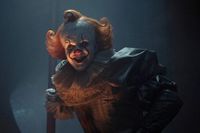When HBO's IT: Welcome to Derry premieres on October 26, 2025, viewers will find themselves swept back into the nightmarish world of Stephen King's most infamous creation: Pennywise, the shape-shifting clown who has haunted the town of Derry, Maine—and the imaginations of readers and filmgoers—for decades. But this new series, developed by Andy and Barbara Muschietti, is far more than a simple prequel or a nostalgic retread. Instead, it aims to peel back the layers of Derry’s haunted history, revealing not just the supernatural evil lurking in the sewers, but also the all-too-human darkness that festers above ground.
Set in 1962, Welcome to Derry takes place 27 years before the events of Muschietti’s 2017 and 2019 film adaptations of IT, and nearly a decade before the original timeline of King’s 1986 novel. According to Collider, the series draws direct inspiration from the novel’s "Interludes," historical vignettes penned by Losers Club member Mike Hanlon, which chronicle the recurring catastrophes that befall Derry every time Pennywise awakens. This narrative device allows the show to expand the mythology of Derry, exploring how evil—both cosmic and human—takes root and mutates across generations.
Bill Skarsgård returns to his chilling role as Pennywise, as well as his human guise, Bob Gray. His performance in the Muschietti films redefined the character for a new generation, adding layers of alien menace and psychological horror to the playful, predatory madness first introduced by Tim Curry in the 1990 miniseries. As Collider notes, Skarsgård’s Pennywise is "a deeply unsettling embodiment of evil," and the series promises to delve even further into the origins and motives of this ancient creature—rumored to have crash-landed on Earth from outside space and time, and to have taken on human forms to better prey on Derry’s children.
But Welcome to Derry is not content to simply rehash old scares. The series introduces a new cast of young outcasts whose struggles and friendships echo those of the original Losers Club. According to Mashable, these new characters—like foul-mouthed Phil (Jack Molloy Legault), the ostracized "Loony" Lilly (Clara Stack), and others played by Amanda Christine, Mikkal Karim Fidler, and Miles Ekhardt—come with their own anxieties about family, belonging, and survival. Their stories feel like "companions to the Losers Club’s own anxieties, as opposed to total rehashes." The show even weaves in relatives of future Losers Club members, offering fans tantalizing connections to King’s original mythology.
The adults of Derry are no less compelling. Leroy Hanlon (Jovan Adepo), a U.S. Air Force Major, finds himself entangled in a top-secret military project alongside Dick Hallorann (Chris Chalk)—yes, the same Hallorann from The Shining. Meanwhile, his wife Charlotte Hanlon (Taylour Paige) is a civil rights activist adjusting to life in Derry, bringing with her a determination to confront the town’s ingrained racism and complacency. Their experiences, as Mashable points out, highlight the show’s willingness to tackle not just supernatural horror, but also the "mundane evils" that plague real communities: racist microaggressions, bullying, and the erasure of Native American land by military expansion.
One particularly chilling sequence, as described by Mashable, involves Charlotte witnessing a group of bullies assaulting a child in broad daylight, only to have a local shop owner dismiss the violence with a casual, "Boys will be boys." It’s a Pennywise-less scene, yet it stands among the show’s eeriest moments—a stark reminder that Derry’s residents have learned to live with evil, whether it wears clown makeup or not. The town’s collective amnesia and casual cruelty are recurring themes, echoing King’s original assertion that people who leave Derry forget its horrors, while those who stay become numb or complicit.
The series does not shy away from depicting the historical traumas that have shaped Derry’s identity. Season 1 will reportedly dramatize the infamous attack on the Black Spot, a nightclub catering to Black residents that was burned down by white supremacists during the Civil Rights era—an event lifted straight from King’s novel. Other catastrophes, such as the massacre of the Bradley Gang and the Kitchener Ironworks explosion, are also expected to unfold as the series progresses. These stories, as the Muschiettis told Entertainment Weekly, allow Welcome to Derry to "focus on the use of fear as a weapon, which is one of the things that is also relevant to our times."
Of course, no IT adaptation would be complete without its signature scares, and Welcome to Derry delivers in spades. Mashable raves about the show’s "ghastly" set pieces, which not only ruin clowns and balloons for viewers, but also "pickles, car rides, and more." Each of Pennywise’s attacks is tailored to the specific fears and traumas of his victims, creating a psychological horror that lingers long after the credits roll. The effectiveness of these scenes, critics argue, stems from the show’s commitment to fleshing out its characters, ensuring that every terror feels personal and earned.
Yet, as much as Welcome to Derry is about monsters and mayhem, it is also a story about the power of memory, belief, and collective action. The Muschiettis have hinted at a "bigger arc" that will span multiple seasons, promising to "expand the mythology and answer big questions" about Pennywise and the town he haunts. As Andy Muschietti told Deadline, "My intention with this was to create a story that is a little bit like an iceberg under the water all through Seasons 1, 2, and 3. There will be an expansion in the mythology and more answers to the big questions."
For longtime fans, the series offers a long-awaited exploration of the connective tissue between Derry, its people, and the evil that preys upon them. For newcomers, it serves as an engrossing entry point into one of horror’s richest universes—a place where the past never really dies, and every shadow might be hiding a red balloon.
With its blend of supernatural terror, historical resonance, and deeply human drama, IT: Welcome to Derry stands poised to prove why, in Derry, the nightmare never truly ends. It just changes shape.





